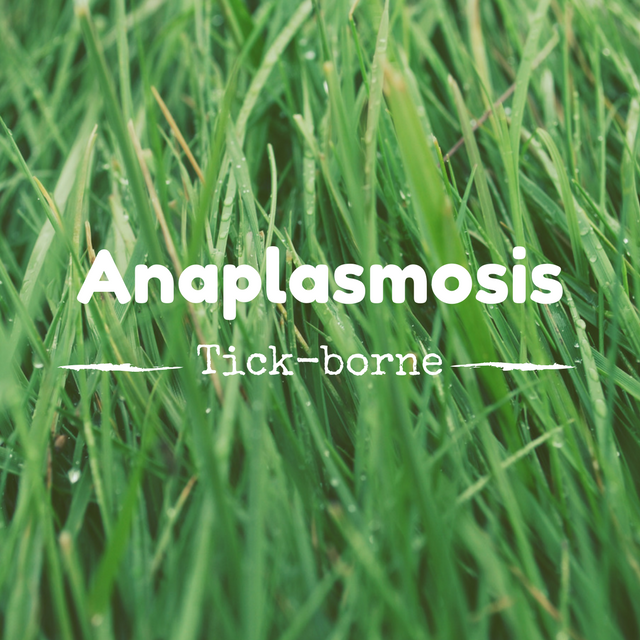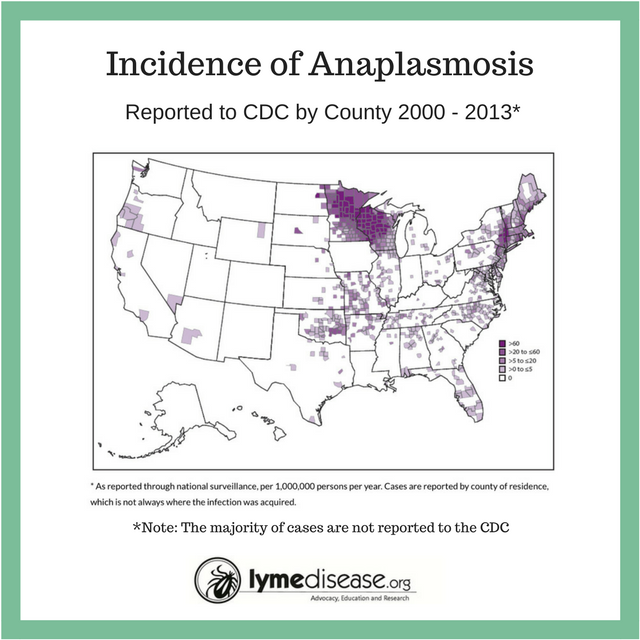LYME SCI: Anaplasmosis, the “anti-freeze” co-infection

According to Richard Ostfeld, an ecologist at New York’s Cary Institute of Ecosystem Studies, the number of white-footed mice (the primary host for Lyme disease on the East Coast) is a close indicator of how much Lyme disease will be seen the following year.
And recent numbers indicate that 2017 will be a particularly bad year for Lyme and other tick-borne diseases—at least on the East Coast.
The blacklegged tick—Ixodes scapularis on the East Coast and Ixodes pacificus in the West—the primary vector for Lyme disease, can also transmit several other pathogens, commonly known as co-infections.
One of those co-infections is called anaplasmosis, which according to a large survey conducted by LymeDisease.org, occurs in about 5% of patients with Lyme disease. (see my previous post on co-infections here)
Human Granulocytic Anaplasmosis
Anaplasmosis, also known as human granulocytic anaplasmosis (HGA), is caused by the Anaplasma phagocytophilum bacterium (previously known as Ehrlichia phagocytophila or Ehrlichia equi). It belongs to a larger group of bacteria known as Rickettsia, which infect white blood cells.
Anaplasma phagocytophilum is commonly found in rodents and small mammals, and can be transmitted to humans by the bite of an infected tick.
The number of reported cases of HGA has been steadily increasing in recent years, with 2800 confirmed cases in 2014. However, these numbers are likely to be low for several reasons. Many cases go undiagnosed or are not confirmed with laboratory testing, and not all states require physicians to officially report the illness.
Geographic distribution
The geographic distribution for HGA is very similar to Lyme, because both diseases share the same primary hosts and primary vectors. The six states with the highest incidence for HGA are: Rhode Island, Minnesota, Connecticut, Wisconsin, New York and Maryland.
Mr. Ostfeld feels that the incidence of anaplasmosis is largely underreported, based on several recent studies. In one two-year study, 45% of wild white-footed mice tested positive for Lyme disease, Babesia and Anaplasma, suggesting high exposure rates to ticks that feed on them. Another study suggested that Anaplasma may act as a type of anti-freeze that helps ticks survive freezing temperatures.
Overall, the infection rate of Anaplasma within questing nymphal ticks varies greatly by state, but has been detected from coast to coast.
West Coast: 0.8% – 4.2%,
East Coast: -5% – 8%
Signs and Symptoms
The symptoms of HGA usually appear 5-14 days after the tick bite and typically include the following:
- Fever (92-100%)
- Headache (82%)
- Fatigue (97%)
- Muscle pain (77%)
- Shaking/chills (77%)
- Rash (fewer than 10%)
- Gastro-intestinal symptoms (rare)
- Neurological symptoms (rare)
Clinical Course
The majority of HGA cases are mild and self-limiting. Infrequently, however, complications like respiratory failure, peripheral neuropathies, bleeding/coagulation problems, pancreatitis and kidney failure may occur. Rarely, HGA can be fatal.
A delay in treatment can result in severe symptoms which may initially resemble toxic shock syndrome—a complication that sometimes arises from certain bacterial infections. Other serious viral or fungal infections can occur during the course of infection while the immune system is compromised. Some HGA patients may need to be hospitalized.
Co-infection with other diseases transmitted by Ixodes ticks (Lyme disease, Borrelia miyamotoi, Babesia, or Powassan virus) can complicate the course of HGA. If a patient has a delayed response to Lyme treatment and a low white blood cell count, it should raise the suspicion for possible co-infection with Anaplasma.
Treatment
The CDC states: “Doxycycline is the first line treatment for adults and children of all ages and should be initiated immediately whenever anaplasmosis is suspected. Use of antibiotics other than doxycycline or other tetracyclines has been associated with a higher risk of fatal outcome for some rickettsial infections.”
In addition, “If the patient is treated within the first five days of the disease, fever generally subsides within 24-72 hours.…Severely ill patients may require longer periods before their fever resolves.”
Summary of HGA
LymeSci is written by Lonnie Marcum, a Licensed Physical Therapist and mother of a daughter with Lyme. Follow her on Twitter: @LonnieRhea Email her at: lmarcum@lymedisease.org .
References:
Forbidding Forecast For Lyme Disease In The Northeast
CDC | Emerging Tickborne Diseases | Public Health Grand Rounds, March 2017






















One Sonoma County park had 60% of ticks infected with Anaplasma. I suspect your data is for the entire state, which is not very useful information according to Bob Lane.
Doctors need to get on board with new information .
I totally agree . Doctors don’t take this seriously I almost died . 3 days in ICU , thank god my wife called for an ambulance . I had all the symptoms , doctor took a blood sample to be tested , in which takes approx. 7 days and wrote me a script for Vertigo . Saw my doctor on wed 7-05-17 ,next day rushed to hospital by ambulance from my home !!!!!!